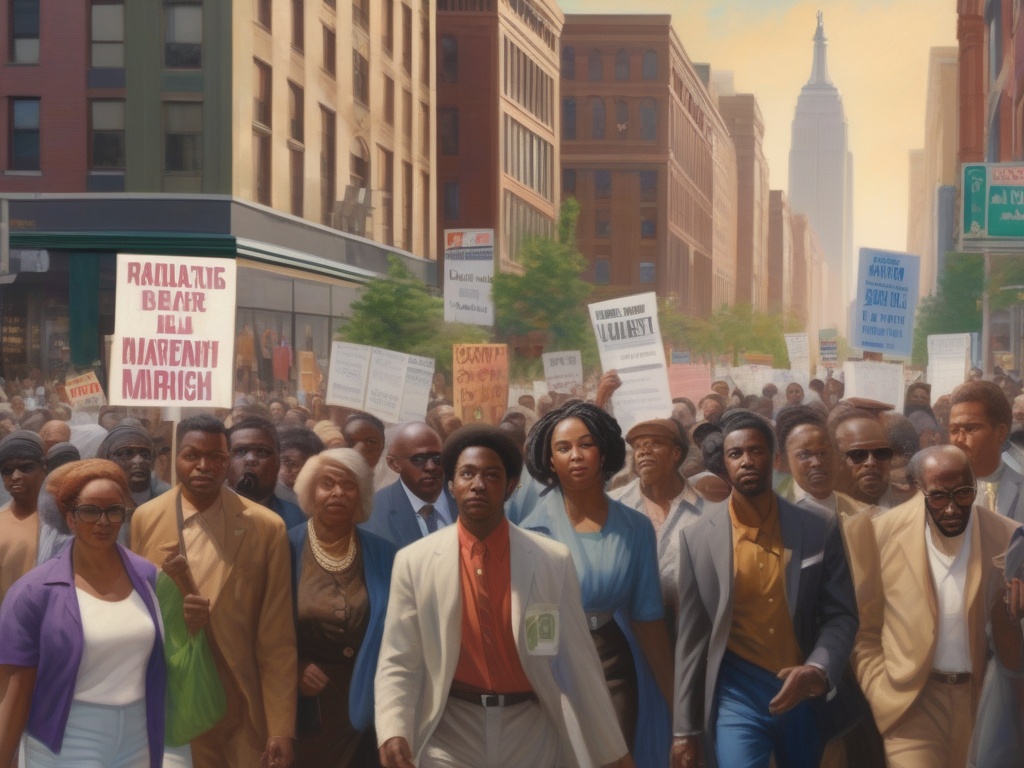The Evolution of Civil Rights: From Struggles to Triumphs
Throughout history, the civil rights movement has been a testament to human resilience and the relentless pursuit of equality. From the earliest struggles against systemic discrimination to landmark victories that reshaped societies, the journey has been nothing short of remarkable. This evolution reflects a broader narrative of societal awakening, where voices once silenced have erupted into powerful calls for change. Understanding this progression is essential to appreciate how far we’ve come and recognize the work that still lies ahead.
The mid-20th century marked pivotal moments in this ongoing saga. The Brown v. Board of Education decision in 1954 challenged the doctrine of ‘separate but equal,’ igniting a wave of activism across the nation. Followed by the historic 1964 Civil Rights Act, which outlawed discrimination based on race, color, religion, sex, or national origin, these victories symbolize collective resilience and determination. Yet, each triumph was preceded by relentless struggles—marches, sit-ins, and legal battles—highlighting the power of unified voices in the face of adversity. Today, these milestones continue to inspire ongoing efforts toward equality, emphasizing that civil rights are a continuous journey rather than a fixed destination.
By examining these transformative moments, we gain insight into the complex layers of social change, recognizing that the path to justice is paved with both sacrifices and victories. The evolution of civil rights underscores the importance of perseverance and unity, serving as a beacon for future generations committed to building a fairer world.
Unveiling the Power of Civil Rights Legislation in Shaping Equality
At the heart of the civil rights movement lies a series of groundbreaking laws that have served as catalysts for societal transformation. These legislative frameworks are more than mere statutes; they are powerful instruments that have dismantled centuries of institutionalized discrimination. The Civil Rights Act of 1964, for instance, was a landmark achievement that forged a legal barrier against racial segregation and bias, fundamentally altering the fabric of American society. Such laws have empowered marginalized communities, giving them a tangible platform from which to challenge injustice and demand equal treatment.
Beyond their immediate legal implications, these statutes have fostered a ripple effect, inspiring further reforms and reinforcing the idea that the pursuit of justice is an ongoing process rooted in legislative change. By establishing clear standards and consequences, legislation has created an environment where discriminatory practices can be challenged in courts, thereby instilling hope and resilience among oppressed groups. This legal arsenal continues to evolve, reflecting society’s commitment to adapting and expanding civil rights protections in response to emerging issues.
While laws form the backbone of civil rights progress, their true power lies in their ability to shape public consciousness. Legislative victories are often accompanied by a surge in social awareness, galvanizing communities and individuals to actively participate in the march toward equality. Civil rights legislation serves as a moral compass, publicly condemning injustice and setting a standard for societal behavior. It compels institutions, corporations, and governments to reevaluate their policies, fostering a culture that prioritizes fairness, inclusion, and respect.
This dynamic relationship between law and society underscores the importance of sustained advocacy. The passage of a law is merely the beginning; its enforcement and societal acceptance are vital in translating legislative intent into real-world change. Through education campaigns, community engagement, and continual legal updates, civil rights legislation remains a powerful force driving social reform, ensuring that the ideals of equality are not just aspirational but actively implemented and protected across generations.
Championing Justice: The Role of Activism and Advocacy in Civil Rights Movements
At the core of every significant civil rights breakthrough lies the relentless spirit of activism. These movements are fueled by ordinary individuals who refuse to accept injustice, transforming personal convictions into collective action. From sit-ins and marches to digital campaigns, grassroots activism has consistently demonstrated that change begins with the power of community mobilization. Such efforts have historically disrupted societal complacency, forcing governments and institutions to recognize the urgency of reform. The ripple effect of these initiatives often extends beyond immediate victories, inspiring new generations to continue the fight for equality with unwavering dedication.
What makes activism so impactful is its ability to galvanize diverse voices into a united front, transcending social, economic, and racial divides. This unity amplifies demands for justice, making it impossible for policymakers to ignore the collective will. As history shows, sustained activism is not just about challenging existing laws but reshaping cultural perceptions—an essential catalyst for enduring societal transformation.
While activism ignites the spark of change, advocacy acts as the strategic engine driving sustained progress. Effective advocacy involves shaping public opinion, influencing legislation, and holding power structures accountable. It’s about more than protests; it’s a calculated effort to create an environment where civil rights are recognized, respected, and protected by law. Advocacy campaigns harness media, education, and policy dialogues to elevate issues that might otherwise remain in the shadows. They serve as a bridge between grassroots efforts and institutional reform, ensuring that civil rights remain a priority on political agendas. The success of advocacy lies in its capacity to adapt to new challenges, whether combating systemic racism, fighting for gender equality, or securing protections for marginalized communities. Ultimately, advocacy sustains the momentum needed to keep civil rights at the forefront of societal consciousness, transforming passionate protests into lasting change.

